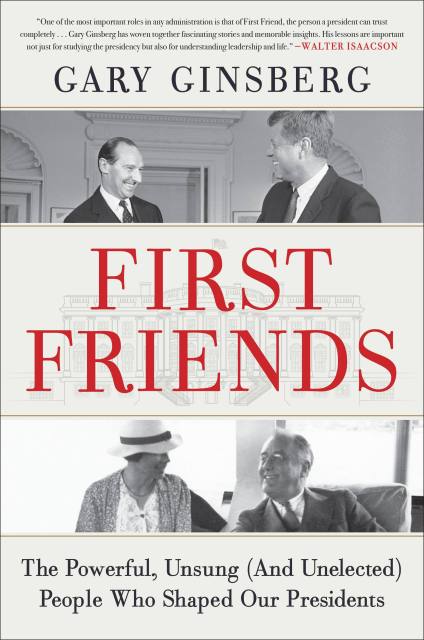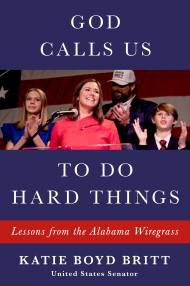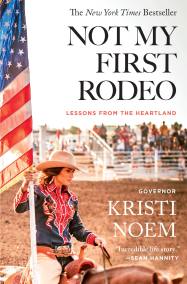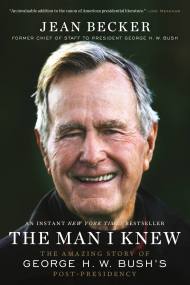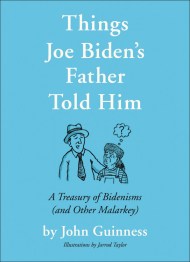Promotion
Use code MOM24 for 20% off site wide + free shipping over $45
First Friends
The Powerful, Unsung (And Unelected) People Who Shaped Our Presidents
Contributors
Formats and Prices
Price
$11.99Price
$15.99 CADFormat
Format:
- ebook $11.99 $15.99 CAD
- Hardcover $30.00 $38.00 CAD
- Audiobook Download (Unabridged) $31.99
- Trade Paperback $17.99 $22.99 CAD
This item is a preorder. Your payment method will be charged immediately, and the product is expected to ship on or around July 6, 2021. This date is subject to change due to shipping delays beyond our control.
Also available from:
A USA TODAY "BEST BOOKS OF 2021" PICK!
In the bestselling tradition of The Presidents Club and Presidential Courage, White House history as told through the stories of the best friends and closest confidants of American presidents.
Here are the riveting histories of myriad presidential friendships, among them:
- Abraham Lincoln and Joshua Speed: They shared a bed for four years during which Speed saved his friend from a crippling depression. Two decades later the friends worked together to save the Union.
- Harry Truman and Eddie Jacobson: When Truman wavered on whether to recognize the state of Israel in 1948, his lifelong friend and former business partner intervened at just the right moment with just the right words to steer the president’s decision.
- Franklin Delano Roosevelt and Daisy Suckley: Unassuming and overlooked during her lifetime, Daisy Suckley was in reality FDR’s most trusted, constant confidant, the respite for a lonely and overworked President navigating the Great Depression and World War II
- John Kennedy and David Ormsby-Gore: They met as young men in pre-war London and began a conversation over the meaning of leadership. A generation later the Cuban Missile Crisis would put their ideas to test as Ormsby-Gore became the president’s unofficial, but most valued foreign policy advisor.
Publishing history teems with books by and about Presidents, First Ladies, First Pets, and even First Chefs. Now former Clinton aide Gary Ginsberg breaks new literary ground on Pennsylvania Avenue and provides fresh insights into the lives of the men who held the most powerful political office in the world by looking at the friends on whom they relied.
First Friends is an engaging, serendipitous look into the lives of Commanders-in-Chief and how their presidencies were shaped by those they held most dear.
Genre:
-
"Intimate...Gary Ginsberg chronicles the unelected yet undeniably powerful people who shape presidencies...advisers of presidents with all-access passes to the Oval [who] can make or break legacies."New York Times
-
"Everyone needs a BFF, especially people in high places: someone to lean on in good times and bad. [An] entertaining and enlightening romp through interpersonal presidential relationships."USA Today
-
"Gary Ginsberg has brought us a fresh, fascinating and irresistible account of nine presidential relationships that helped to change history. FIRST FRIENDS demonstrates that one of the best ways of understanding the presidents of our past is to discover their relationships with intimate friends, and the author tells us many important things we did not know before.”Michael Beschloss, New York Times bestselling author of PRESIDENTS OF WAR
-
“One of the most important roles in any administration is that of First Friend, the person a president can trust completely and be relaxed around. It’s a wonderful idea for a book, and with his great research and personal feel for true friendship, Gary Ginsberg has woven together fascinating stories and memorable insights. His lessons are important not just for studying the presidency, but for understanding leadership and life.”Walter Isaacson, #1 New York Times Bestselling Author of LEONARDO DA VINCI
-
“Gary Ginsberg takes a fascinating and utterly original look at the most crucial of questions: How do we best understand those who occupy our highest office, and the first friends who supported them?"Malcolm Gladwell, #1 New York Times bestselling author of TALKING TO STRANGERS
-
“Ginsberg has crafted an insightful series of biographies, showing just how these friendships thrived and survived and were consequential for the nation’s history.” Booklist (starred review)
-
“First Friends … paints a crisp, well-proportioned portrait of an otherwise under-considered area of presidential history.”National Review
-
“This is...the book you want to read this summer.”Fareed Zakaria, Fareed Zakaria GPS
-
"Even if you're an avid reader of presidential biographies, you'll find yourself saying, 'Who knew?' all the way through FIRST FRIENDS. Gary Ginsberg combed through diaries, letters and interviews with an investigator's eye, teasing out personal details about the intimacies of nine presidents and their best friends. It is one of the best reads of the genre, rich with well-told anecdotes, new angles on critical historical events and evidence of the vital importance of friendship for presidents—and all of us. This book is a joy to read."Lesley Stahl
-
"FIRST FRIENDS is an overdue reminder that deep friendship has always played a priceless role in shaping the contours of history. It gives us a fresh reminder of the power of relationships."Tom Brokaw
-
“Delicious, charming and original, this examination of largely unexplored terrain—presidents and their best friends—packs a historical punch.”Peggy Noonan, Wall Street Journal columnist and bestselling author of THE TIME OF OUR LIVES
-
"This book was a wonderful surprise for it is engaging, entertaining and informative. Gary Ginsberg has opened an entire new genre and important area of presidential study—their close friends. This is an insightful look at presidents from the point of view of those who can have even more influence on them than their top advisers. Gary's reporting shines fresh light on the workings of the highest political office in our government. Best of all, it is a fun read."John W. Dean, Nixon White House Counsel
-
“What a great book! I loved it!”Joe Scarborough and Mika Brzezinski, Morning Joe
-
“I have to say, this subject is so fertile, a great subject for a book. And the examples [Gary Ginsberg] chose are phenomenal.”John Berman, CNN New Day
-
“The author wraps history and humanity in a sparkling package."Kitty Kelley, Washington Independent Review of Books
-
“A fresh, well-written take on the lives of our presidents.”Kirkus
-
“Readers will delight in this intriguing look at the human side of the presidency.”Publishers Weekly
- On Sale
- Jul 6, 2021
- Page Count
- 304 pages
- Publisher
- Twelve
- ISBN-13
- 9781538702949
Newsletter Signup
By clicking ‘Sign Up,’ I acknowledge that I have read and agree to Hachette Book Group’s Privacy Policy and Terms of Use
